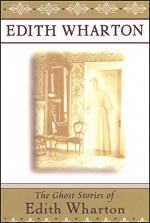
|
| Name: _________________________ | Period: ___________________ |
This test consists of 15 multiple choice questions and 5 short answer questions.
Multiple Choice Questions
1. When does Mary first realize that Ned is missing?
(a) When the boiler repairman asks to speak with him.
(b) When she tries to find him to tell him that lunch is ready.
(c) When the stranger reappears and asks for him again.
(d) When Trimmle comes in to ask her whether she has seen Ned.
2. After Mary thinks more about the house and its ghost, what does she begin to wonder?
(a) Whether she might actually already know the identity of the ghost.
(b) Whether it is possible that Alida lied to them about the ghost.
(c) Whether her household servants have ever seen the ghost.
(d) Whether Ned has seen the ghost and this is the cause of his strange mood.
3. Why does Mary have a hard time seeing the details of the man's appearance on that day in October?
(a) The sun is behind the man.
(b) Ned quickly moves to block her view.
(c) Her eyesight is not very good.
(d) The man is deliberately keeping himself in the shadows.
4. What does Ned say, on page 83, must be true for him to believe a house is old?
(a) It must be "thoroughly uncomfortable."
(b) It must be "practical."
(c) It must be "bought out of an exhibition."
(d) It must be "a registered home."
5. In section "II," what question does Mary repeatedly ask Ned that evening in the library?
(a) She asks whether he is having an affair.
(b) She asks whether it was a good idea to move into this particular house.
(c) She asks whether he has given up trying to see the ghost.
(d) She asks him what secret he is keeping from her.
6. Ned asks Alida a question about the ghost's "signalement" (84). What is he asking about?
(a) Its physical description.
(b) Its movements and habits.
(c) Its background.
(d) Its motivations.
7. From what period is Ned and Mary's new home?
(a) Edwardian.
(b) Tudor.
(c) Georgian.
(d) Regency.
8. Where is Mary and Ned's house located?
(a) Devon.
(b) Dorsetshire.
(c) Shropshire.
(d) Kent.
9. According to Alida, what is unusual about the ghost at Ned and Mary's new house?
(a) It can come and go--it is not "bound" to the house itself.
(b) It can assume a physical form.
(c) It can take different forms depending on who is living in the house.
(d) No one knows they have seen it until quite a while after they actually see it.
10. While she is thinking it over in the library, where does Mary finally decide the blame lies for Ned's distracted, anxious mood?
(a) With herself.
(b) With Ned's business affairs.
(c) With Ned.
(d) With the house and its ghost.
11. On page 84, the narrator links isolated environments to "acuities of emotion." What are "acuities of emotion"?
(a) Exaggerated emotion that is difficult to control.
(b) Bluntness or dulling of emotion.
(c) Quickly changing emotions.
(d) The ability to perceive emotion with sharp accuracy.
12. In section "V," who comes to visit Mary?
(a) Alida.
(b) Hugo.
(c) Parvis.
(d) Bob Elwell's widow.
13. Why does Mary believe that people should not talk about seeing ghosts?
(a) It is bad manners.
(b) It is dangerous.
(c) It frightens the ghosts away.
(d) It makes people wonder about your sanity.
14. In section "III," when Mary looks at the house from across the property, what does she feel about the house?
(a) That it is like a kindly older person that keeps secrets for the good of others.
(b) That it seems to be laughing at her, somehow, almost mockingly.
(c) That is is like an evil creature squatting in the landcape.
(d) That it seems to be trying to communicate something urgent to her.
15. What does Mary learn from the contents of the envelope?
(a) Her husband is being sued.
(b) All of their money is gone.
(c) Bob Elwell is dead.
(d) Her husband is a criminal.
Short Answer Questions
1. Which character opens the story on page 83 by saying "Oh, there is one, of course, but you'll never know it"?
2. Why does the narrator say that Ned and Mary are "two romantic Americans" (83)?
3. When Mary, startled by the envelope's contents, cries out and rises to her feet, how does Ned react?
4. When the story refers to "Boyne," who or what is being referred to?
5. Mary thinks about the "latent" significance of a piece of information on page 83. What kind of meaning does this information have?
|
This section contains 800 words (approx. 3 pages at 300 words per page) |

|




